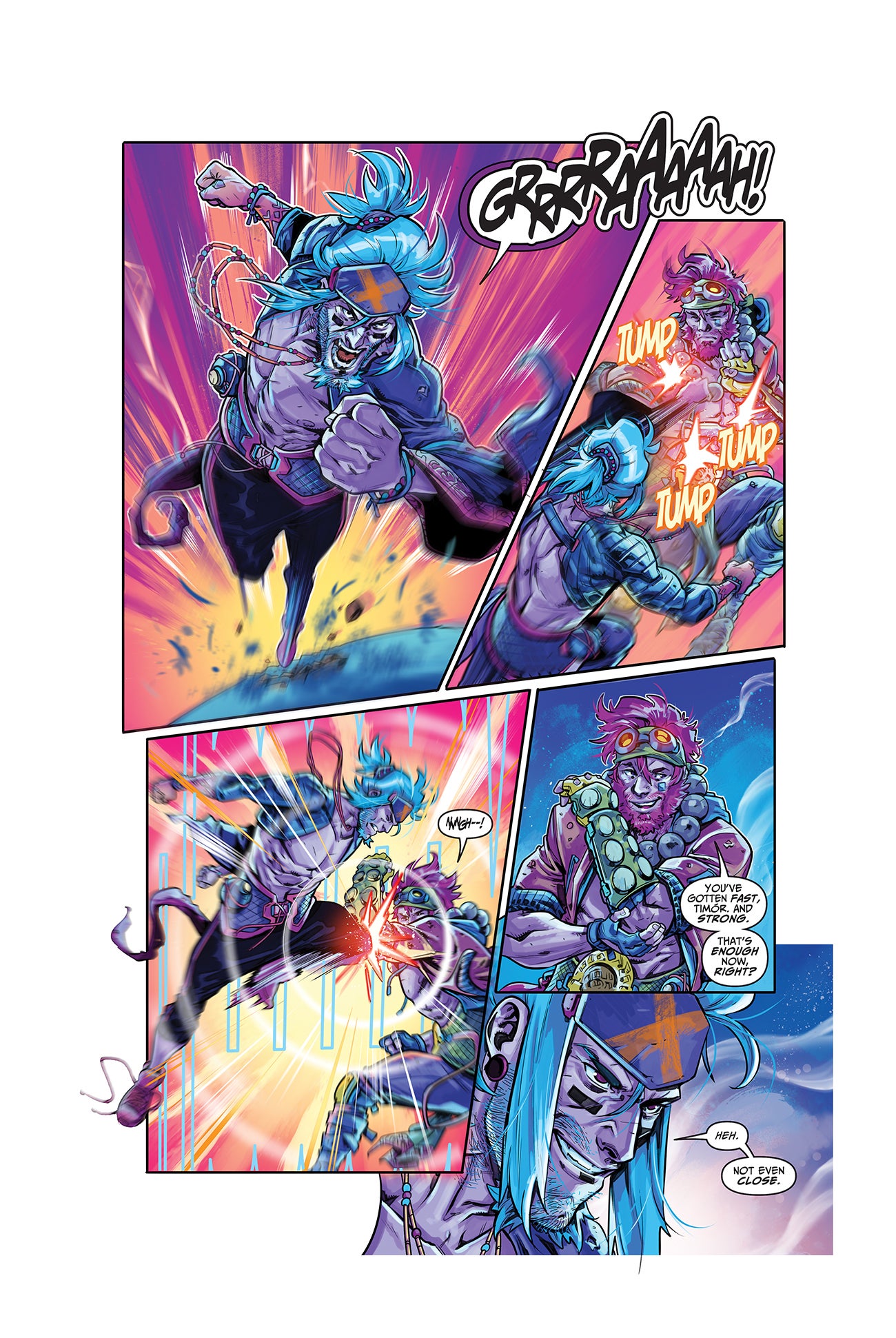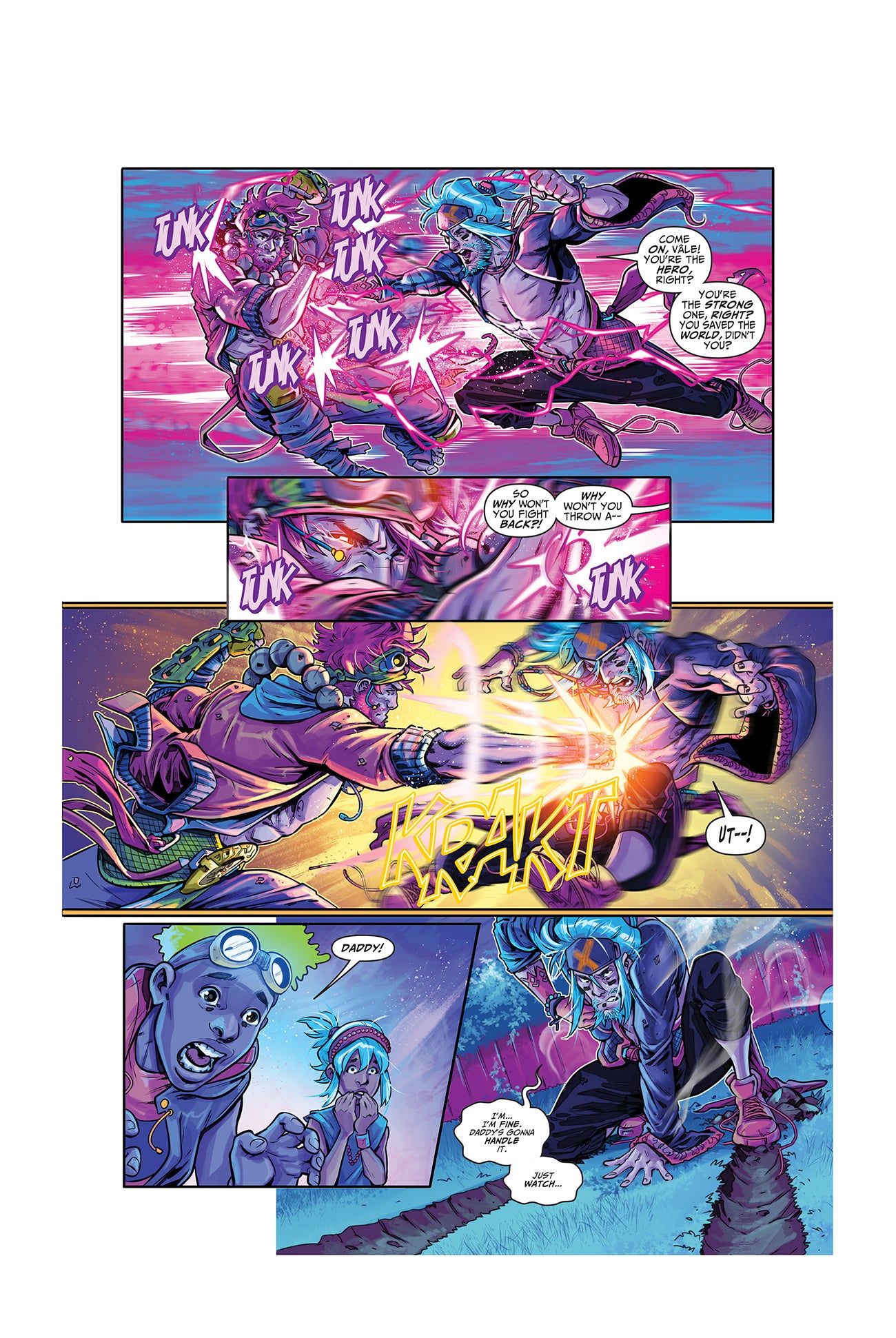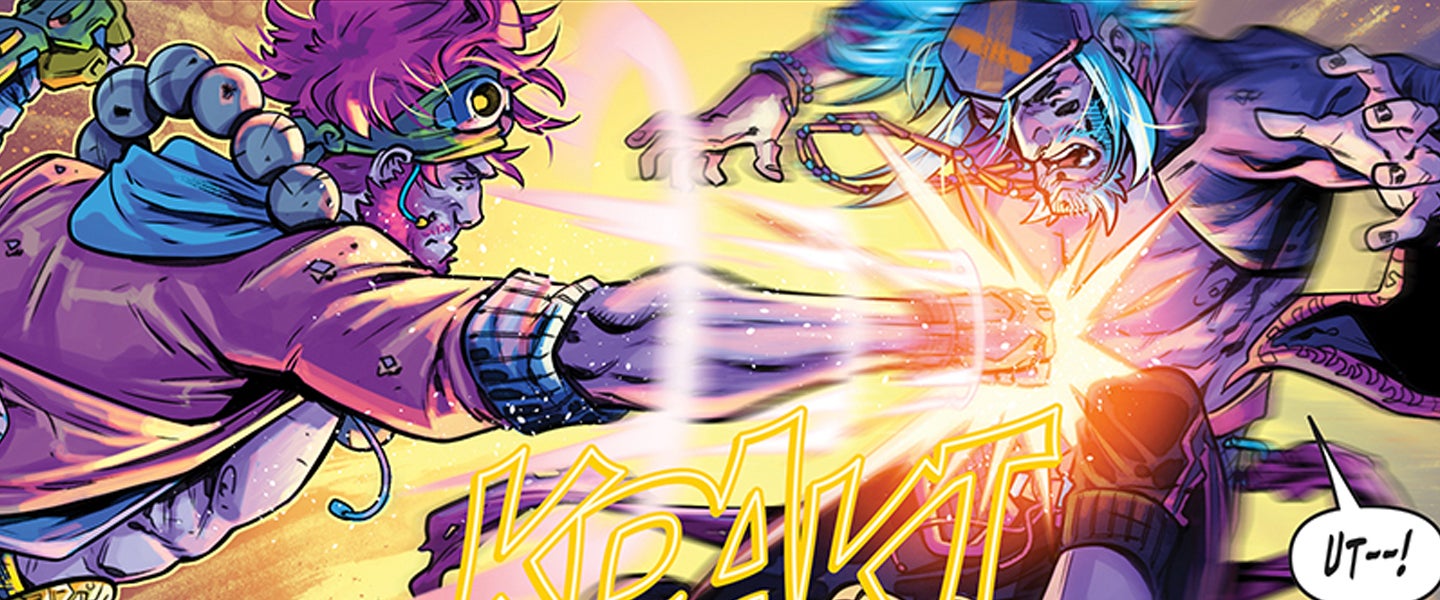Whenever I see two big powerhouse comic-book fighters, super stylized with either humongous muscles or humongous hair, I instantly speculate about their power levels, how long their fight would take and who would prevail. But then, something unexpected begins to happen. The ensuing fight could be ultra violent, a bloodbath of epic proportions, but if it drags on long enough, I start filtering out the ultraviolence and thinking about everything else. Do these two fighters have families? What’s their history? What are their likes and dislikes? What are their hopes and dreams? It would seem that blood is the point of a big fight story, but for fans like me, it’s anything but — that conclusion to combat can provide catharsis, yet more than often than not, it’s merely colorful background for studying all the relationships we’ve become obsessed with.
For that, we can blame the Cartoon Network, Viz Media or whatever homebrew subtitler happened to be shipping us Dragon Ball tapes. Two decades ago, many of us sat glued to the television or unable to put down the manga we were reading, caught up in the story of Son Goku as he progressed from beating up a strong bad guy to beating up an even stronger bad guy. Although big fight stories have been around since forever, this was something new: a comic story that spread across 8,000 pages of manga and hundreds of TV episodes as creator Akira Toriyama slowly wound his way to a conclusion.
The battles were impossibly protracted, but also oddly comforting. You could go months without reading the manga or watching the anime, only to return to it and find everything in a kind of status quo ante. Even when Dragon Ball was formally relaunched in its latest Dragon Ball Super iteration in 2015, catching up with the plot, which involved more big fights concerning the fate of the universe and eventually a huge fight tournament to save many universes, took no time at all. Goku was still the strongest guy, Vegeta still wanted to be as strong as Goku and Goku’s son Gohan and his mentor Piccolo still remained good friends.
According to literature professor Tobias Wilson-Bates, that’s the critical, habit-forming feature of this type of tale. “The Greeks and Romans basically just rewrote the same myth sequences over and over again like an endless parade of new lead actors playing Spider-Man,” Wilson-Bates explains. “Everyone loved and knew those characters in a way that wasn’t so much about which animal Zeus was when he had sex with whomever, but more about spending time — often years or even lifetimes — following a narrative thread as part of a larger group. Dragonball is like this too. People are dead, alive, monsters, humans, good guys, bad guys. You can stop watching for two years and return pretty much aware of what’s going on because it’s like making a savory stew in the slowest slow cooker of all time.”
And because I cut my teeth on this sort of tale, I looked for variations everywhere. I sought out stories like One-Punch Man and Baki because they offered me variations on the big fight story. The former manga gave me a hero, Saitama, whose invincibility thwarted the collection of world-beaters in his path and forced me to pay attention to what all the mere mortals were doing instead. Baki, by contrast, appeared as one of Netflix’s surprisingly excellent array of anime offerings and dropped me into a world of hypertrophied musclemen and martial artists, some based on real combat heroes like Antonio Inoki and Muhammad Ali, who already had a deep and bloody history with each other and forced me to care enough to bother uncovering that history.
Then there were the domestic comic-book stories that my lifelong friend, pop culture journalist Zack Smith, and I consumed during our adolescence — e.g., Erik Larsen’s long-running Savage Dragon series, which put its eponymous, green-skinned hulk of a hero through two decades of what Smith describes as “a series of 22-page fistfights highlighted by Larsen’s insistence on drawing these enormous, emphatic square fists that smash into the characters’ rectangular faces.” More recently, we partook of The Walking Dead creator Robert Kirkman’s Dragon Ball/Superman mash-up Invincible, an ode to superheroics, family and pugilism in which powerful alien warriors, a mustache-sporting cross between Kryptonians and Saiyans, drove their fists through each other’s stomachs (an animated series is in development at Amazon Studios).
All of these series were good, because big fights are always good, but could anything possibly attempt to wrap up the genre with a bow — to merge Japanese and American fight-progression lore into a single story that isn’t so much comedy, parody or commentary as it is its own freestanding mono-myth?
That’s precisely what No One Left to Fight, the new Dark Horse comics series from the creative team of writer Aubrey Sitterson and artist Fico Ossio, hopes to accomplish. The duo is more than just big fight fanboys looking to take the all-powerful but seemingly very bored and socially inept protagonist Vale, an analog for Son Goku, on a rollicking ride to a big fight — they intend to turn up the emphasis on interpersonal drama to an 11. For starters, Vale arrives on the scene to an awkward homecoming, looking like someone who has failed to enjoy any of the normal romantic and domestic relationships that others around him find bliss in.

“If fights are the purest form of conflict, family drama takes a very close second, and for largely the same reasons — what draws us to this stuff isn’t intellectual or academic, it’s primal and visceral,” explains Sitterson. “Love, hate, resentment, longing, jealousy — these are emotional fuel, and they imbue fights with metric tons of meaning. It’s why wrestling storylines sometimes veer into full-on soap opera and why the UFC runs video packages detailing their fighters’ backgrounds.”
“It’s very important to know and care for the characters doing the fighting,” Ossio adds. “You can draw the most epic fight scenes and brutal attacks, but you don’t really feel the fights unless you’re invested in the characters. One-Punch Man does that well; Saitama is a super relatable character, and you understand his struggle from the very beginning. It all leads into some of the most dynamic and brutal comic book pages I’ve ever seen.”
But why bother structuring all of these relationships around one or two slow-building big fight arcs instead of the usual endless fisticuffs? What makes this the sort of narrative that I and others will consume voraciously (and compulsively)? “There’s something biologically fascinating about fights; something in our lizard brains — some vestigial remnants from our ancestors’ fight for existence — draws people to combat,” explains Sitterson. “It’s the purest form of conflict, and conflict is what all stories are based on, right? By acknowledging and embracing that fact, you can build a narrative where everything leads into and complements that most distilled, perfect form of drama: A BIG FIGHT.”

Of course, there are also all the nerdy inside-baseball things that a big fight story can leave unstated, barely stated or implied, assuming that the audience will try to chase them down and methodically fill in the gaps. “The power levels [on Dragon Ball] are what define how formidable the characters are and how capable they are of beating one another. It all works together with the lore-building, the previous battles and who’s beaten whom, which gives readers a clear idea of where everyone stands,” says Ossio. “The progression through these fights has a lot to do with the appeal. These are stories about growth, meeting challenges head-on and coming out victorious. They’re easy to understand, but incredibly epic.”
“Knowing how powerful characters are gives us context, and even more importantly, expectations,” adds Sitterson. “If you think about what makes a real fight interesting, it’s typically one of a few things: A shocking upset, an unexpected turn of events or a well-earned win. That’s how all stories work: By denying, subverting or confirming expectations. You have to refuse to give people what they want, twist those desires into knots, and finally, once they’re confused as to what it is they’re even clamoring for, you deliver.”
Among the bigger questions the Dragon Ball arc left unresolved, at least for me, had to do with Son Goku, a kind of aw-shucks, natural man who was oddly free of misgivings, second thoughts or even sexual drives (he was unaware of biological sex differences early in the manga’s run, and despite fathering children, he appeared utterly uninterested in his hectoring his spouse Chi-Chi). Goku’s lack of humanity made for an interesting leitmotif, but even when I was a teenager, I wondered if such a person would actually be more interesting were cognizant that he missed out on happiness by a few minutes at some appointed destination. Which, naturally, Vale is — he appears to be melancholy and self-aware to a fault.
A hero with such a potentially tragic flaw makes sense, especially given that the goal for No One Left to Fight is nothing short of epic — not least because these big fight tales function, as Wilson-Bates noted, as a modern version of the epic. “Fico and I started with a few specific big fights in mind and then built the entire narrative around making sure that they not only mattered, but that our readers yearned for them,” says Sitterson. “We laid things out like the ideal professional wrestling story, one that not only comments on big, heavy, heady themes of regret, resentment and growing older, but uses them to stoke the flames of combat. There’s a sense that these types of stories — the big fight arc — are somehow limited in what they can accomplish, but we’re ready to show people that when done properly, fight stories have as much thematic depth as any drier genre or even literary fiction. Not to mention, they’re a hell of a lot more fun.”
Obviously, too, such stories boast way more ultraviolence than, say, To the Lighthouse (Lily has plenty of fatigue, though). That can never be forgotten. It is, after all, what got many of us big fight fans here in the first place, back when we were just impressionable kids looking for a fun way to pass the time. Or as Sitterson puts it: “You can build and deliver drama in all kinds of ways, but nothing scratches that primordial itch like watching someone take a fist to the jaw.”

